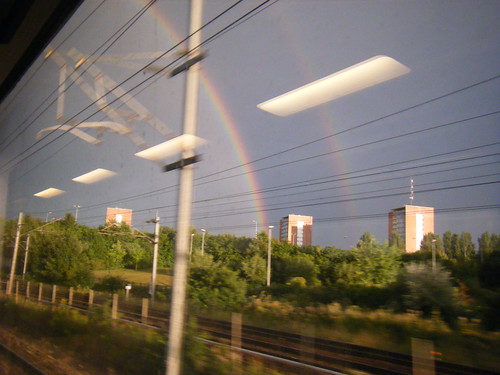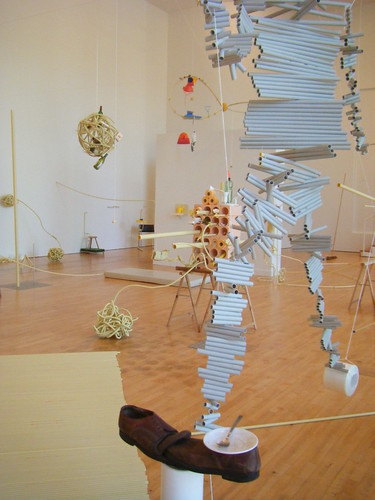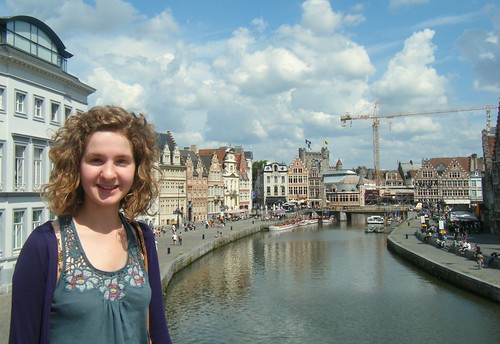So, Mum and I have been trying to organise a trip to Ghent for a while now and the other week I finally got an opportunity to tag along. With my shifts at the cathedral shifted and my apologies made to the Greens I was able to take a break from incessant smiling and letterboxes for a few days.
On the Eurostar as we hurtled through the countryside and into the city we spotted some spectacular rainbows.
I don't know if you've noticed but in Norwich there are 12 iconic buildings (the Castle, Cathedral, St. James Mill... the ones worth noticing) that are linked up with 12 buildings in Ghent, a city that shares some common features, as part of an EU funded project called Shaping 24. I was keen to track them down like a pirate looking for architectural treasures, or more accurately, a big kid. The lady at the tourist information desk had never heard of Norwich or this initiative, but she helped me out marking the sites on the map, no doubt thinking I was a bit of a nutter. I managed to visit or spot 9 out of 12 buildings (75% explorer success rate!) including: two abbeys, a cathedral, a church, an old monastery, a museum of fine art, a city hall, a bell tower and a castle. Their Castle of the Counts looks even more Disney than ours on account the flags on top and St. Bavo's Cathedral was a bit spooky, too many tombs and a crypt full of bling and tat. The Beguinages monastery, however, where religious women the sign defines as "widows or spinsters who wished to live and independent but committed life outside the recognised orders with their vows of fidelity and poverty", was well worth tracking down. I wandered around the monastic buildings weighing up the likelihood of my being one of those women and came to the conclusion that a nun's life would seem like emancipation in comparison to a life of perpetual childbearing.
I also spent some time nosing around the S.M.A.K contemporary art gallery. They had an exhibition about installation art and the new challenges it brings to curators. Its interesting to think about the order behind what appears to be chaotic, the huge files of information about dimensions, materials and even dust that you wouldn't otherwise know existed.
Installation by Honoré d’O
Apparently, Ghent is the 'Veggie Capital of Europe'. I don't know who gave them that accolade, especially considering this statistic from the campaign website: "In Belgium we eat an average of about 1,800 animals during our lifetime: 891 chickens, 42 pigs, 5 cows, 789 fish, 7 sheep, 43 turkeys and 24 rabbits and other game. With one veggie day a week you can save 250 animals in the course of your lifetime!" Perhaps this prize is for good intentions and progress. The campaign emphasises the benefits of "flexitarianism", an umbrella term that provides shelter for vegetarians who occasionally eat meat and meat-eaters who are keen vegetarian food and reducing their carbon footprint. I think its really important that making green choices becomes a natural part of people's lives. I reckon the spirit of compromise central to flexitarianism is vital if greener ways of thinking are ever to become just thinking.
I had lunch at the Soup Lounge a café where you can get a bowl of soup and with bread and an apple for 4 euros. The décor was pretty swanky, all white benches and orange stools and funky lighting. I sat slurping tomaat soep by the window watching people walk by a cobbled street. Amusingly enough despite my tomaat soep sounding vegetarian I didn't experience Donderdag Veggiedag (Veggie Thursday) in action the chef man piling a generous helping of not particularly welcome greyish meatballs into my bowl with a flourish before serving it up to me!
I went to Ghent. It is a medieveal city. Ignore the crane.






No comments:
Post a Comment